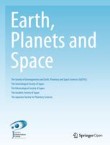Earth, Planets and Space welcomes submissions to this special issue on “Effects of Surface Geology on Seismic Motion (ESG): General State-of-Research”.
In the quest to understand and predict the behavior of strong ground motions during devastating earthquakes, studies about the effects of surface geology on seismic motion (ESG) have progressed considerably in the last three decades. Concurrently, advancements in the ESG related research can be readily attributed to the proliferation of available strong motion data and accessible computational power. Despite these improvements, there remains significant shortfall in our understanding of ESG as demonstrated by phenomena from recent devastating earthquake-related site effects. Thus, investigations toward the quantification of ESG should be underscored in efforts toward earthquake disaster mitigation because of the significant influence of ESG on strong motion characteristics.
The IASPEI/IAEE Joint Working Group on the Effects of Surface Geology on Seismic Motion (JWG-ESG) organized the 6th International ESG Symposium (ESG6) in Japan in August 2021, which yielded submissions of more than 100 papers that originated from 21 countries. ESG6 is the 6th successive JWG-ESG gathering, since the inaugural 1992 ESG1 held in Odawara, Japan. After the recent 2016 ESG5, which was held in Taipei, Taiwan, JWG-ESG organized a special issue on the journal Earth, Planetary and Space (EPS) entitled “Effect of Surface Geology on Seismic Motion: Challenges of Applying Ground Motion Simulation to Seismology and Earthquake Engineering” from 2017 to 2018, in which 16 papers were collected and published. For the 2021 ESG6 Symposium, JWG-ESG observe tradition and propose to publish a special issue (or issues) about recent studies related to ESG through the EPS journal to share and disseminate the state-of-the-art in this important research field.
We expect that a significant portion of the authors who contribute to ESG6 will submit their materials to the proposed EPS special issue(s). We also expect to find submissions from authors who indirectly or did not participate in ESG6 but wish to contribute relevant papers about ESG. We believe that this special issue(s) will attract a broad spectrum of readers and thus, contribute to stimulating discussions about new paradigms and influencing future ESG studies, as well as seismology in general.
Submission Instructions
Before submitting your manuscript, please ensure you have carefully read the submission Guidelines Earth, Planets and Space. The complete manuscript should be submitted through the Earth, Planets and Space submission system. To ensure that you submit to the correct special issue please select the appropriate special issue in the drop-down menu upon submission. In addition, indicate within your cover letter that you wish your manuscript to be considered as part of the special issue on 'Effects of Surface Geology on Seismic Motion (ESG): General State-of-Research'. All submissions will undergo rigorous peer review and accepted articles will be published within the journal as a collection.
Deadline for submissions: 30 September 2022
Lead Guest Editor
Hiroshi KAWASE, Kyoto University, Japan
Guest Editors
Hideo AOCHI, BRGM, France
Cécile CORNOU, Univ. Grenoble Alpes, Univ. Savoie Mont Blanc, CNRS, IRD, Univ. Gustave Eiffel, ISTerre, France
Fabrice COTTON, German Research Center for Geosciences and University of Potsdam, Germany
Shinichi MATSUSHIMA, Kyoto University, Japan
Alan YONG, U.S. Geological Survey, USA
Rapid publication: Online submission, electronic peer review and production make the process of publishing your article simple and efficient
High visibility and international readership in your field: Open access publication ensures high visibility and maximum exposure for your work - anyone with online access can read your article
No space constraints: Publishing online means unlimited space for figures, extensive data and video footage
Authors retain copyright, licensing the article under a Creative Commons license: articles can be freely redistributed and reused as long as the article is correctly attributed
For editorial enquiries please contact: eic@earth-planets-space.org
Sign up for article alerts to keep updated on articles published in Earth, Planets and Space - including articles published in this special issue!






























